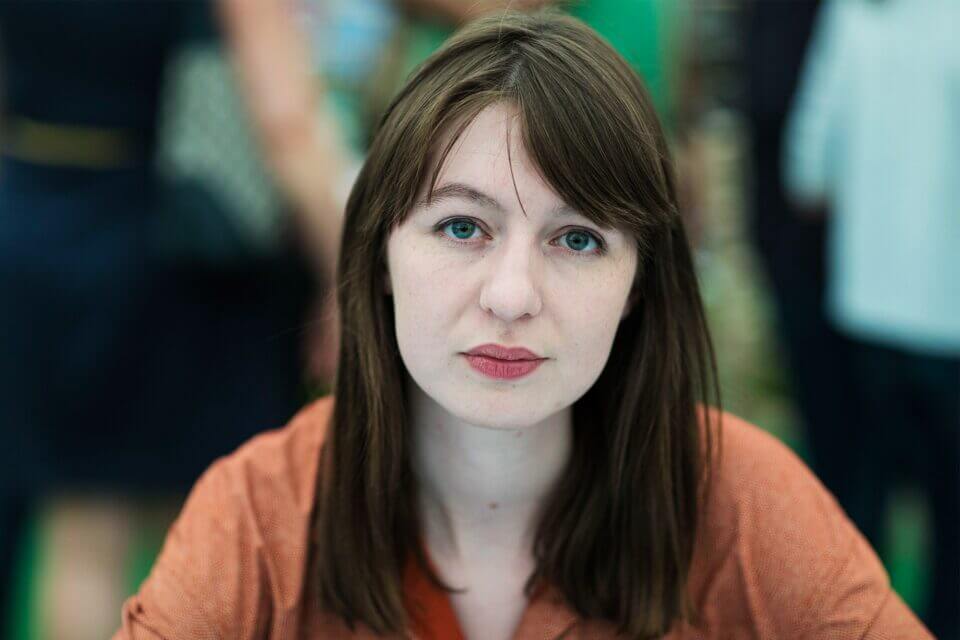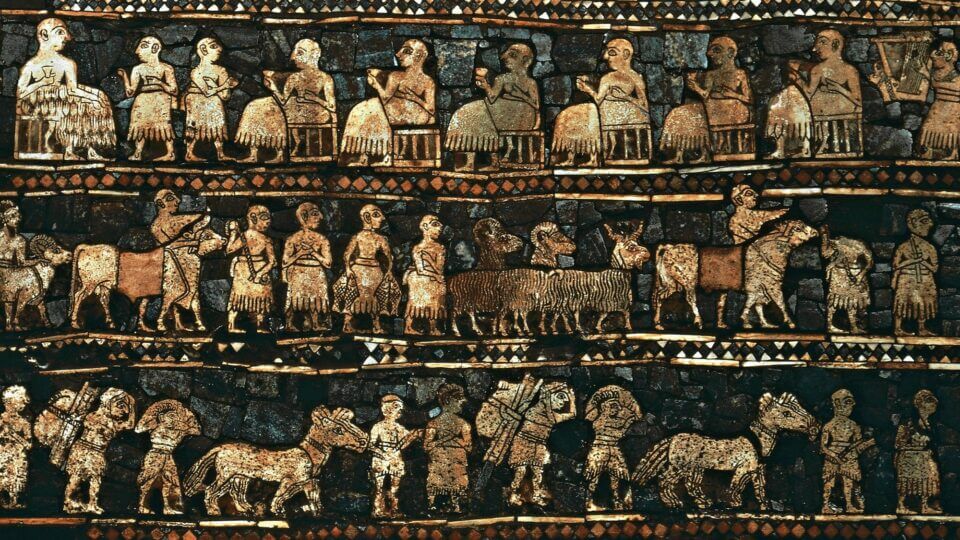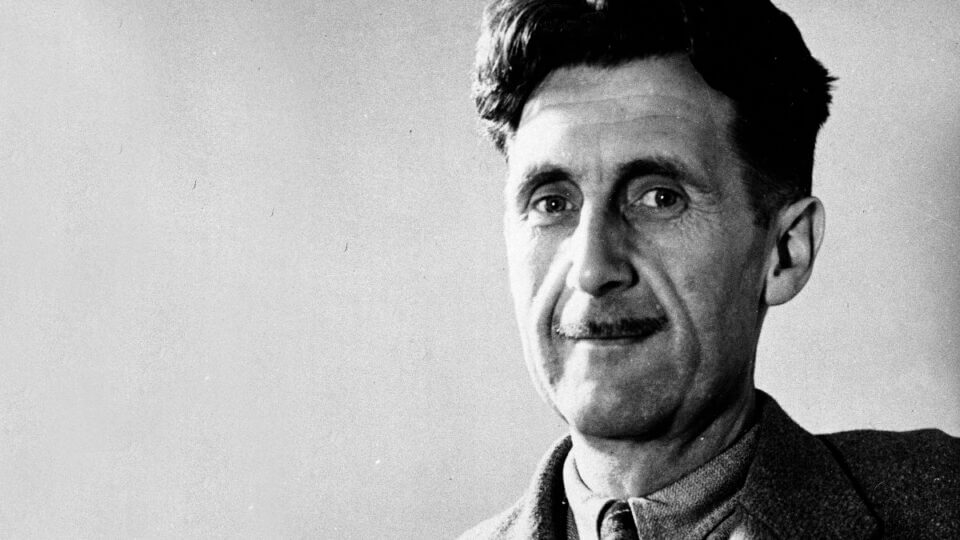
“Despite the book’s homage to Friedrich Schiller via its title, we get nothing even remotely reminiscent of the profound intellectual mind meld between him and his great friend Johann Wolfgang von Goethe.”
As evinced by its title, Irish author Sally Rooney’s latest novel asks a question that is anything but straightforward. When it was released in 2021, Beautiful World, Where Are You promised to be a mature, thoughtful meditation on the disappearance of beauty from our contemporary, hyper-political world. While it certainly falls short of this promise, the novel does reveal various points of entry for a more genuine discussion. For one, there is Rooney’s preferred choice of style, which is oddly out of step with her story’s central thematic arch. Rife with protracted, mechanical descriptions of the most painfully quotidian mannerisms and interactions, much of the book has all the flair and vivacity of a dishwasher manual. Already in the opening scene we get the following dry fare:
“A woman sat in a hotel bar, watching the door. Her appearance was neat and tidy: white blouse, fair hair tucked behind her ears. She glanced at the screen of her phone, on which was displayed a messaging interface, and then looked back at the door again. It was late March, the bar was quiet, and outside the window to her right the sun was beginning to set over the Atlantic. It was four minutes past seven, and then five, six minutes past. Briefly and with no perceptible interest she examined her fingernails. At eight minutes past seven, a man entered through the door.”
There are many more passages like this, and they all have an unmistakably stoic texture to them—that is, they deliberately seem to lack taste or sensitivity of any kind. Everything is kept at a careful distance; at no point does the reader get the sense of mimetic evocation that is so typical of great works of literature, of some face-to-face confrontation with an extraneous presence. The voyeurism that is on display here lacks any danger of involvement on the part of the voyeur and, thereby, obviates the necessary preconditions for a cathartic experience. As readers, we are offered the comfort and safety of total insulation. There is nothing pleasing to behold (nothing, as such, to tempt us), nothing to grab onto, only the immaculate gloss of a stainless prose, “so clean, it reflects the readers’ prejudices right back at them” (as one reviewer artlessly put it).
But this seems to have produced its own kind of entrancing effect. Indeed, there is something mesmeric about the numbness of Rooney’s writing. It is not impossible to guess why such a style might hold appeal for disaffected millennial readers, to whom it probably suggests a kind of God’s-eye view, replete with all the insouciance and solipsism that is associated with that. In fact, with Rooney, we seem to have stumbled upon the stylistic equivalent of that perfect repose sometimes ascribed to the Christian Divinity: the absolutely untethered state of aseity, the abstracted simplicity of a God who has renounced every emotive quality, who alone is able to say: I am that I am.
Postmodern Weltschmerz
A substantive part of the novel takes on a different tone, however. About half of the book records an ongoing email exchange between Alice and Eileen, the novel’s two protagonists, in which they discuss the various existential concerns du jour. If, at this point, Beautiful World, Where Are You were conceived as a self-aware riff on the dilution of the epistolary genre in the digital age, we might honestly congratulate Rooney on a job well done. Unfortunately, gauging how the novel was received, such was probably not Rooney’s intention. Despite the book’s homage to Friedrich Schiller via its title, we get nothing even remotely reminiscent of the profound intellectual mind meld between him and his great friend Johann Wolfgang von Goethe. Instead, we are treated to a familiar portrait of discursive confusion—an aimless groping in the dark that has become emblematic of so much latter-day pseudo-intellectualism.
At various points in their correspondence, Alice and Eileen try to broach the topic to which the title alludes: the status of the beautiful—and of art, generally—in the late liberal era. What they come up with are not really answers—or even the outlines thereof—so much as free-floating comments that further underscore the question. In a rather silly exchange, Eileen says that she thinks “people lost the instinct for beauty in 1976, when plastics became the most widespread material in existence.” Alice later replies that Eileen is “wrong about the instinct for beauty. Human beings lost that when the Berlin wall came down.” She is quick to add: “I’m not going to get into another argument with you about the Soviet Union, but when it died so did history.” This then segues into what is perhaps one of the most depressing paragraphs in the entire novel:
“Aren’t we unfortunate babies to be born when the world ended? After that there was no chance for the planet, and no chance for us. Or maybe it was just the end of one civilisation, ours, and at some time in the future another will take its place. In that case we are standing in the last lighted room before the darkness, bearing witness to something.”
Alice, a famous author living all by herself in a large mansion, is, even by her own friend’s admission, the embodiment of “extraordinary privilege.” While not anywhere near as successful, Eileen occupies a “low-paid but interesting job as an editorial assistant at a literary magazine.” Both have a modicum of friends, a semblance of family, occasional lovers. By modern standards, they are well-off, each living pretty decent, or at the very least, “interesting,” lives. And, yet, listening to these women converse with one another, we are left with a sense that their reality more closely resembles the early apostolic age than the present day: that they are two pilgrims wandering the desert, awaiting the sudden irruption of the Deliverer. Alice and Eileen both seem convinced of a very imminent eschaton, which will happen sometime during their lifespans. It is never entirely clear why they think so, but the whole book is soaked through with this feeling. All throughout, there is an intoxicating mélange of pining for lost beauty—“aesthetic nostalgia,” as the characters call it—mixed in with barely disguised flirtations with crypto-religious iconography and personal resignations to the trivium of the everyday—that familiar constellation of repetition and routine, now newly sanctified, suffused, as it were, with an apocalyptic significance that annuls and sublimates its fleeting, self-involved nature. It is this confusing mix, this tenuous hodgepodge, that finally comes to define the novel as whole.
Tying it all together is Rooney’s self-avowed Marxism. Even if, as Allan Bloom once put it, “the mature Marx had almost nothing to say about art, music, literature or education, or about what the life of man would be when the yoke of oppression was lifted”—even if, in other words, Marx was a die-hard materialist to his very core—the image of the man continues to elicit a kind of fascination in all manner of aesthetic types, Rooney included. Indeed, Rooney’s Marxism further elucidates the aplomb generally ascribed to her deadpan literary voice. As one writer put it: “[Rooney] writes with a rare, thrilling confidence, in a lucid and exacting style uncluttered with the sort of steroidal imagery and strobe flashes of figurative language that so many dutifully literary novelists employ.” (One hopes the intended targets were not novelists like Conrad, Peake, Melville, or Shakespeare, who, with their “steroidal imagery and strobe flashes of figurative language,” created some of the most numinous and enduringly haunting visions ever to grace the pages of English literature.) The lucidity and exactingness with which Rooney expresses herself both stem from a castigated spirit which, even as it bemoans the profligate raunchiness of capitalist society, must ultimately view all artistic activity with muted suspicion. For, when faced with impending doom (explicitly: “general systems collapse”), what could be more “definitionally useless” than art?
In the same way that Marxism as a whole provides only the simulacrum of a response to the disenchantment and alienation that is so characteristic of modern life, the Marxist artist must coyly eschew any true engagement with artistic beauty. Art beautifies the given. What, asks the Marxist, could be more corrupt, more indulgent, than that? And yet, there are hints scattered all throughout Rooney’s work pointing us toward something more considerable. As Eileen notes in one of her many rambling emails to Alice:
“It is hard in these circumstances not to feel that modern life compares poorly with the old ways of life, which have come to represent something more substantial, more connected to the essence of the human condition. This nostalgic impulse is of course extremely powerful, and has recently been harnessed to great effect by reactionary and fascist political movements, but I’m not convinced that this means the impulse itself is intrinsically fascistic. I think it makes sense that people are looking back wistfully to a time before the natural world started dying, before our shared cultural forms degraded into mass marketing and before our cities and towns became anonymous employment hubs.”
Every so often, one gets the sense that Rooney is onto something, that her Marxism is holding her back. In fact, the book’s title makes this more or less explicit. What in Marx keeps appealing to “sensitives” of all castes—not least, one presumes, the whole cadre of readers who adulate Rooney’s artistic output as though it were a new devotional corpus—is a feature that he shares with much of the tradition of German idealism. Schiller, whose 1788 poem Die Götter Griechenlands (“The Gods of Greece”) furnished the phrase “schöne Welt, wo bist du,” was one of the very first to have given voice to modernity’s now widely acknowledged paucity of spirit. Confronted with the barbarity of the aftermath of the French Revolution, Schiller felt the need to course correct vis-à-vis what he recognized as some of the excesses of modernity’s emancipative self-consciousness.
Strictly speaking, it is clear that the beautiful world—which to Schiller was the aesthetic lifeworld of Homeric Greece—went the way of slavery and constant, internecine warfare: that is to say, out the window. But, for Schiller, it was important not to throw the baby out with the bathwater. By jettisoning what had given the ancient world its distinctive lustre, modernity had submitted itself to the “strictest laws/Of a godless nature,” to the cold and calculating reason of enlightened insight. Where, in Schiller’s mind, the ancient world had enjoyed a harmonious, existentially integrated conception of human life, modern man found himself riven between his instinctual drives, his natural inclinations, on the one hand, and the abstracted laws of reason on the other. If the Enlightenment was to succeed, it first had to figure out how man could be made whole again.
This was a problem that had already occupied Rousseau. Indeed, as Rousseau saw it, true republican liberty was a rare and delicate thing, and modern states were—in no sense—straightforwardly capable of safeguarding it. In fact, because the modern world differed so much from that of the ancient polis—ecologically, economically, and artistically speaking—the scope of the task set before philosophers was considerable: “no longer having the same advantages [of a mild climate, aristocratic leisure, and linguistic eloquence]…how are we to preserve the same rights?” Rousseau’s conception of the social contract had tried to address this question with the notion of a general will to which each particular will must be subordinated. He was trying to bring back an image first created by Blaise Pascal, of “a body full of thinking members,” in which each member must realize his dependence on the whole while still persisting in his heterogeneity as a distinct member. For Rousseau, as well as Pascal before him, the point of concern was how to inculcate in modern humans the notion that “in willing the good of the body, they will their own good,” and then they can supersede the alienation brought about by the universal laws of reason.
Schiller agreed with the mission; however, in his mind, Rousseau’s social contract was not up to the task. If men of the future were to avoid the “crude, lawless instincts” that had been so on display during the Terror—for which, according to Hegel, Rousseau’s insistence on the general will had in no small part been co-responsible—it would be necessary to cultivate a new vision of “Totality.” No abstract principle could realize this. For the “state of nature” to be transformed “into a moral state,” man would require an aesthetic education. Only through such an education would it be possible to “harmonise [physical life] with laws, and make [laws] dependent on impressions.” Human beings must be formed rather than merely subjugated if ever they were to thrive in the moral state. The well-formed individual Schiller calls a “beautiful soul.” In such a soul, “sensuousness and reason, duty and inclination harmonise, and grace is its epiphany.”
Suffice to say, nowhere in the neoliberal West is an aesthetic education being genuinely pursued—let alone actively practiced. Still to this day, the “moral possibility is wanting.” We remain unsusceptible to the realization of a wholesome political union. On this front, as on many others, the Enlightenment has failed us. The lasting impact of that failure resonates in the impotence of so many artists, creatives, and intellectuals alive nowadays, who, like Rooney and her acolytes, seem eager for an end to the humdrum of it all, only to have capitulated to the empty, resentful shrill of “revolution.”
The Great Refusal
In ways Rooney was perhaps unaware of, her own peculiar blend of Marx and Schiller was already pre-empted by the intellectual grandfather of the New Left, Herbert Marcuse. I have already written about Marcuse in light of the historical emergence of cancel culture, but the full range of his influence on our conceptual landscape is even more thoroughgoing. With works like One-Dimensional Man and Eros and Civilization, Marcuse can be credited with the intellectual development of what is now called neo-Marxism. Its original conception stems from the observation that the class-conscious proletariat has lost its revolutionary zeal; in fact, it has been absorbed and co-opted by the oddly successful, neoliberal welfarist society of the postwar era. In its current incarnation, the proletariat can no longer be considered “the living negation of society,” the “revolutionary subject” so cherished by Marx. Indeed, as Marcuse puts it, “the organized worker in the advanced areas of the technological society lives [his] negation less conspicuously [than the proletarian of the previous stages of capitalism] and, like the other human objects of the social division of labour, he is being incorporated into the technological community of the administered population.”
In principle, one could choose to see this as a good thing. Apparently, the rising tide really does lift all boats. Marcuse, however, considers advanced, industrial society to be residually “totalitarian” in myriad ways. According to him, such a society is not yet capable of providing a truly permissive habitat for human beings to play in. Exercising one’s liberty in a fashion that is unburdened by the yoke of everyday necessity remains a forestalled possibility. In certain crucial respects, the homo economicus of the post-war era remains tied to his “enslavement by socially necessary labour.” The worker might be able to enjoy a modicum of “leisure time,” which makes the drudgery of his life somewhat more bearable, but, as Marcuse reminds us, such leisure time is not “free time”—the prior “thrives in advanced industrial society, but it is unfree to the extent to which it is administered by business and politics.” A new revolutionary subject must be identified to abolish the totalitarian nature of late-stage capitalism and usher in a new, non-repressive civilization. Marcuse turns away from the industrial worker and toward “the substratum of the outcasts and outsiders, the exploited and persecuted of other races and other colours, the unemployed and the unemployable,” thus, in Marxist terminology, away from the proletariat and toward the lumpenproletariat (or in French: la bohème).
Interestingly, Marx would probably not have approved of Marcuse’s line of reasoning. The former did not believe the lumpenproletariat (elsewhere referred to by Marcuse as “the Damned of the Earth”) could be made conscious of its revolutionary potential, precisely because its “members” were not unified by anything so definite as economic class. Nevertheless, Marcuse insists: The “opposition [of the outcasts] is revolutionary even if their consciousness is not. Their opposition hits the system from without and is therefore not deflected by the system; it is an elementary force which violates the rules of the game and, in doing so, reveals it as a rigged game.” As I have tried to argue elsewhere, it is exceedingly doubtful whether Marxism as such is able to fulfill its communistic commitments. Neo-Marxism adds to the outstanding difficulties insofar as it neglects the dimension of Bewusstsein which Marx inherited from Hegel, and which was key to the logic of dialectical progress. Without an element of Bewusstsein, Marcuse’s negation of industrial society becomes little more than a “Great Refusal—[a] protest against that which is.”
Among the “frontrunners” in the protest against the status quo, we must count the neo-Marxist intellectuals, artists, and activists, the would-be Alices and Eileens, who, according to Marcuse, should model themselves after Orpheus and Narcissus—the archetypical freedom fighters, the finely strung souls par excellence. Here, Marcuse might be taking Schiller’s philosophy as his revolutionary roadmap, but, in doing so, he has chosen to channel only the latter’s most extreme positions. The beautiful world becomes an alternative, “aesthetic dimension,” which enables the “denial of all order”—a world not unlike that of “the salon, the concert, opera, theatre,” all of which “are designed to invoke another dimension of reality.” For his part, Schiller already hinted at the anarchical traits of pure aesthetics: “For the reason that taste respects not the substance but only the form, it gives the mind at last a dangerous tendency to neglect, for the most part, all reality, and to sacrifice truth and morality for an attractive exterior.” Unfortunately, a finely strung soul himself, Schiller was unable to completely resist the magnetic pull of this dangerous tendency. Being able to neglect all reality is ultimately the unique privilege of the gods, “the ever-happy” who are “freed…from the fetters of all motive, all duty, all care.” For Schiller—and, one presumes, for Marcuse as well—“the enviable lot of divinity” (indeed, of Die Götter Griechenlands), glutted as it is with “indolence and indifference,” is also “the freest and noblest existence.”
The ideological undercurrent of what Christopher Lasch, rather prophetically, called “the revolt of the elites” is on full display here. In the same way that the 20th century bore witness to a “temporary alliance between the mob and the elite” (in the vein of Hannah Arendt’s 1951 workThe Origins of Totalitarianism), so the post-war era is animated by an equally unfortunate alliance between the lumpenproletariat and the beautiful soul. As a consequence of this unholy alliance, the “elite” has slowly begun cannibalizing the societal substrate which first enabled its accrual of material welfare. In the words of Lasch:
“An aristocracy of talent—superficially an attractive ideal [with Jeffersonian origins], which appears to distinguish democracies from societies based on hereditary privilege—turns out to be a contradiction in terms: The talented retain many of the vices of aristocracy without its virtues. Their snobbery lacks any acknowledgement of reciprocal obligations between the favoured few and the multitude. Although they are full of ‘compassion’ for the poor, they cannot be said to subscribe to a theory of noblesse oblige, which would imply a willingness to make a direct and personal contribution to the public good.”
The post-war “elites” of the advanced, industrial—and, in more recent times, globalized, post-industrial—society are characterized above all by their “insulation from the common life.” In extremis, this insulation has taken on the guise of a Great Refusal, which allows the “elites” to couch their aloofness in terms that, paradoxically, appear socially conscious, when, in fact, they have joined in an open revolt “against that which is” and actively seek the final expurgation of every trace of noblesse oblige.
The Word of Reconciliation
Interpreted carefully, Schiller’s thought foregrounds two competing visions of ethical conduct. On the one hand: healthy moralism made frictionless through artistic initiation. On the other hand: artistry for its own sake and free play dislocated from any overarching sense of duty. Animating the shift from the former to the latter—from an ideal of harmony and grace to the invalidation of all ideals—is a sense of profound disillusionment with the bourgeois order (and all its purported “morality”). In Schiller’s On the Aesthetic Education of Man in a Series of Letters, this shows up clearly as an indictment of modern society’s one-dimensional fixation on material welfare: “Utility is the great idol of the age, to which all powers stoop and all talents do homage. The spiritual merit of art has no weight in its clumsy balance, and, robbed of every incitement, flees from the century’s noisy mart.”
Marcuse’s Great Refusal is merely a gross exaggeration of the bohemian haughtiness already exhibited by Schiller. Art, excoriated from the standpoint of Utility as “definitionally useless,” must be romantically embraced precisely for its uselessness (on this fine point, the transition between Marxism and neo-Marxism is almost seamless). Its fervent appreciation of its own uselessness is, in fact, the burning core of its spirit of refusal. But this refusal just prolongs the prostration of art, and is a testament only to its prevailing narcissism and puerility. In its current, reduced state, art can no longer furnish an educational mould—and one suspects that, on some deep level, artists know and regret this. At best, art offers critique, reproach, refutation—a series of hollow expletives hurled against an overbearing system—but very little else. Performative kitsch is all it can really aspire to.
Once enlisted in the Marcusian revolt, the beautiful, finely strung soul can only become twisted and gnarled—and of this sickened condition Hegel has already given the best description. Instead of incorporating a newly harmonized body politic, the disaffected, beautiful soul has retreated into itself. In the endless hustle and bustle of bourgeois, capitalist society, it sees only the traces of an irredeemable system, of a remote and nebulous superstructure (be it “patriarchy,” “fascism,” or “neoliberalism”) that corrupts and defiles everything it touches. Embittered, infantilized, the beautiful soul condemns its surroundings. It becomes a critic, a lawgiver, a “hard-hearted judge.” Every “acting spirit” it suspects of perfidy, because—to put it in Hegelian terms—“it opposes the partiality of [all] action.” In the absence of an aesthetic harmony between natural inclination and duty, all supposedly dutiful actions are suspected of veiled egoism and imposture. The beautiful soul fancies itself a “moral valet” (a metaphor Hegel borrowed from Goethe), dealing with every agent not as an individual capable of noble behaviour, therefore “not as a [potential] hero, but as one who eats, drinks, and wears clothes, in general, with his individual wants and fancies.” Mistrusting the particularistic motives behind every action, it denigrates the whole worldly realm—which now belongs to the Adversary. Thus, it would see statues defaced and history deconstructed, nay-sayers shamed, and apologists gelded. Seething, it projects evil everywhere, and evil is all it sees.
But, Hegel warns, “the consciousness that judges in this way is itself base… Further, it is hypocrisy, because it passes off such judging, not as another manner of being wicked, but as the correct consciousness of the action, setting itself up in this unreality and conceit of knowing well and better above the deeds it discredits, and wanting its words without deeds to be taken for a superior kind of reality.” Has there ever been a better, more concise, more perspicacious characterisation of all that we have come to associate with “wokeness,” with “the Thing?” Could it be that the Thing—that peculiar amalgamation of hyper-individualism and pseudo-puritanical dogmatism—is really no more than a tragicomic revenge story, enacted by the beautiful soul vis-à-vis the disjointed society it considers aesthetically, spiritually bankrupt? I say “tragicomic” because the unhappy, pure soul seems to have unwittingly turned what began as a noble impulse into a display of complete farce. By myopically criticizing every positive action for being radically insufferable, while at the same time giving the utmost credence to mere empty talk and cheap “signalling,” it has even fallen prey to the worldly, utilitarian, and “meritocratic” system it so despises.
By fleeing inward, the beautiful soul has reduced the scope of meaningful action to the “contemplation of its own divinity.” To break the spell of its hypocrisy, it is not enough simply to scrutinize the Thing from the outside. To thaw the hard heart of the moral judge, the inner truth of the beautiful soul must be given its due. The perfidious makeup of the modern condition must be acknowledged. At the same time, the Thing cannot be allowed to draw out its current temper tantrum. The Thing, in all its snobbishness (sine nobilitate) and deific solipsism, in all its standoffishness and overt cynicism, must be brought to a Fall. It must become mortal again, and rejoin the world of the living. It must be made to utter “the word of reconciliation” and, as Hegel puts it, “renounce the divisive thought and the hard-heartedness…which clings to it.” To reopen the door to a “moral possibility,” the beautiful soul must finally confess to its own wickedness, which indeed is undeniable and cannot be sustained.
On some subliminal level, much of this is acknowledged by Rooney in her latest book. It is there but only very dimly. One recognizes it in the way Alice talks about Jesus, about how he seems to “embody a kind of moral beauty,” or in the fact that she realizes how “in public [she is] always talking about care ethics and the value of human community” when really, she does not take care of anyone but herself. One even notices it in the contrast between the affectless, remote manner of writing employed throughout the more plot-focused chapters, and the much more effusive—if horribly naïve—language used by Alice and Eileen during their epistolary exchange. It is all there…somewhere. One would hope—perhaps foolishly—to notice a lot more of it in the future.
Michael Weyns is a Ph.D. candidate at Ghent University.










